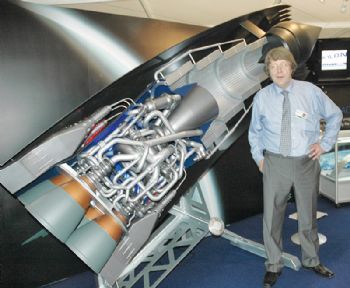
A former Rolls-Royce engineer says that his project to take an aircraft into earth orbit and back again is progressing well.
Alan Bond, 72, who formed Reaction Engines with two friends in 1989, expects next year to see the first components built for a demonstrator of his engine, named Sabre (Synergetic air-breathing rocket engine), with testing due to commence in 2020. Mr Bond says that his technology will “revolutionise access to space, where launching methods have changed little since the 1960s”.
Elon Musk’s Space-X company has spent huge sums searching for a cheap and re-usable way to get into orbit, but it still uses traditional rocket technology that requires loads of liquid oxygen.
Mr Bond says: “Sabre will take a vehicle into orbit in a re-usable single-stage vehicle. It will use jet-engine technology that effectively ‘breathes’ air for 20% of the journey to orbit before switching to rocket mode to complete the trip.” This saves about 250 tonnes of liquid oxygen, and the aircraft should be able to return to earth and repeat the trip.
Mr Bond says that the real innovation of his engine is its ability to quickly cool the air passing through the jet turbine and into the rocket, while expelling all moisture to prevent frosting that could block the cooling system.
Mark Ford, head of propulsion engineering at the European Space Agency (ESA), says: “The heat exchanger is the key. If that had not worked, this technology would have gone nowhere.”
The Government has donated £60 million (via the European Space Agency) to fund the demonstrator phase, and BAE Systems has contributed £20 million in exchange for a 20% stake, but Reaction Engines CEO Mark Thomas says that his company will need more investment.
He adds that the technology will interest partners from outside the space sector: “Its cooling concept has applications well beyond aerospace, stretching to transport, power systems and aviation. It can be used anywhere you have thermal management challenges, where you need to transfer heat efficiently.”